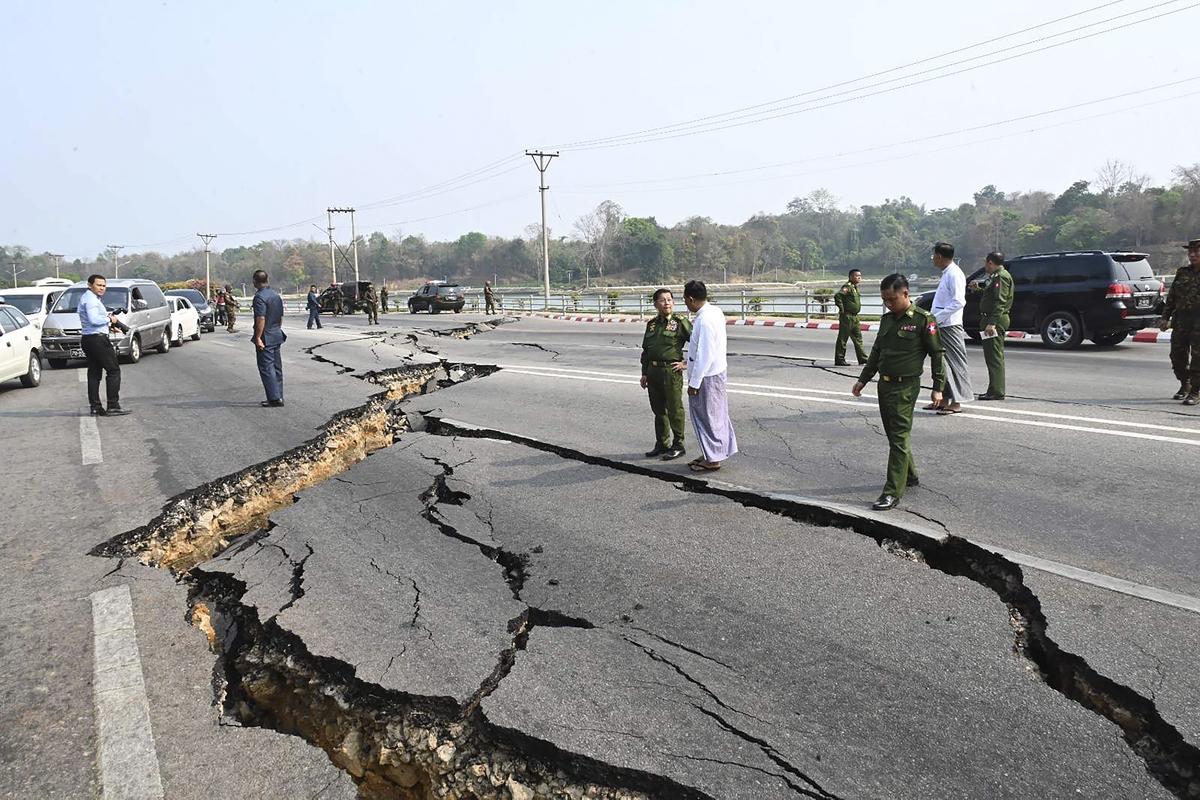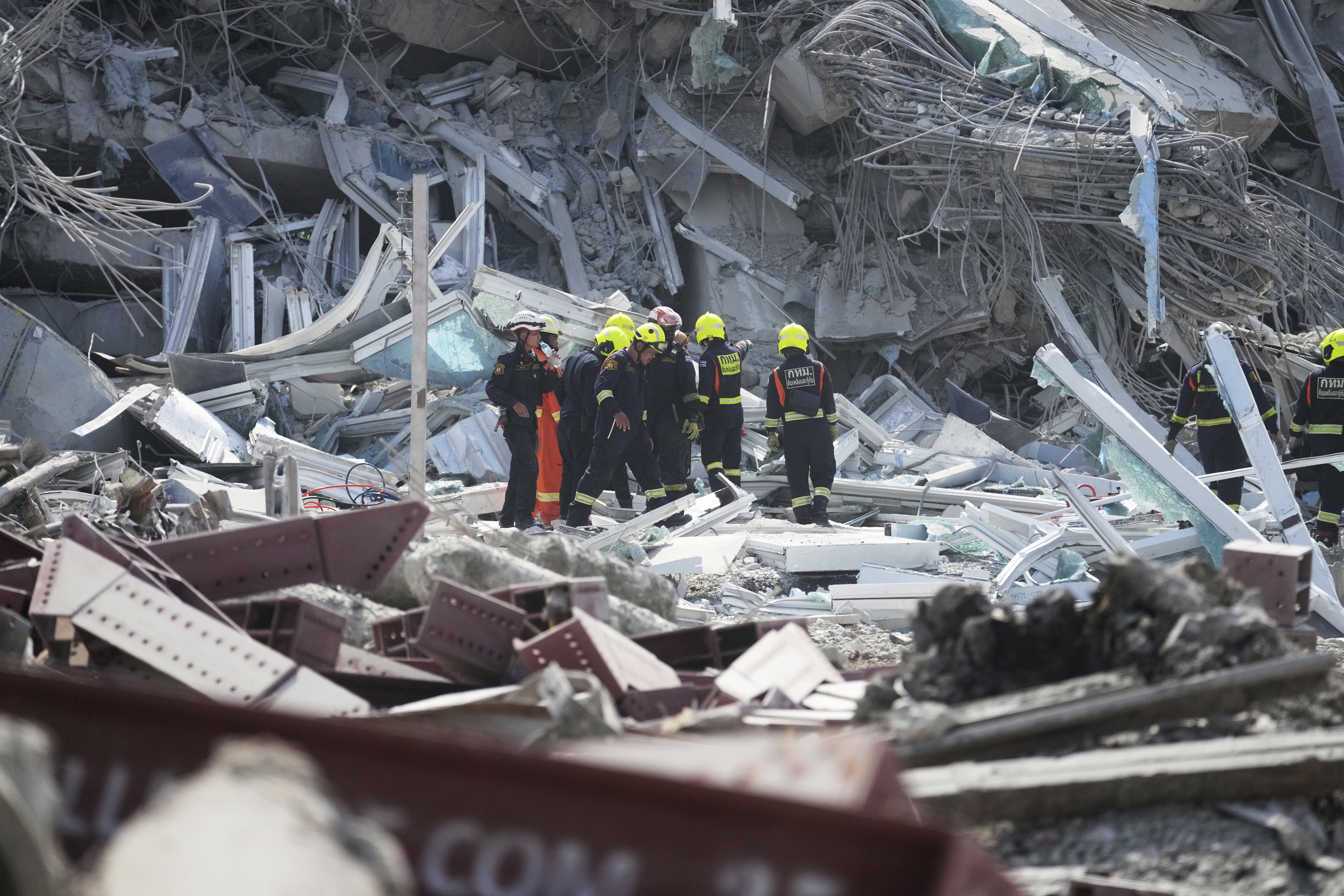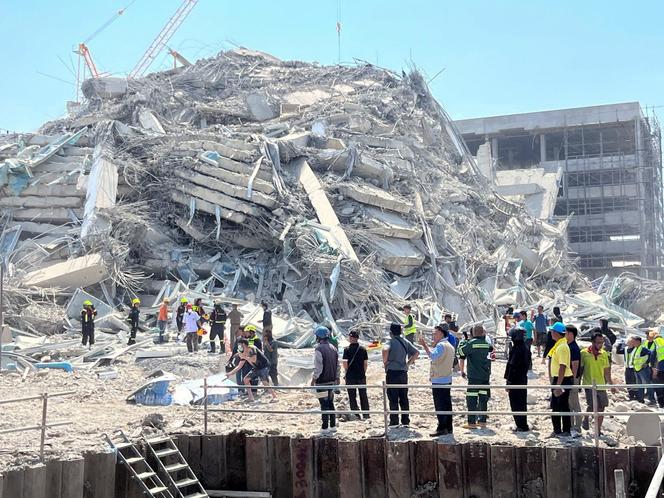A powerful earthquake rocked Myanmar and Thailand on March 28, 2025, claiming at least 150 lives and causing hundreds of injuries. The 7.7-magnitude earthquake, centered in Myanmar, was followed by several aftershocks, one of which measured 6.7 on the Richter scale. This tragic event has left thousands in mourning, with rescue efforts still ongoing. While the full scale of the disaster is still unclear, new details continue to emerge, shedding light on the profound impact of the earthquake on the region.
The Impact of the Earthquake in Myanmar
The earthquake struck at approximately 1:30 p.m. local time (2:30 a.m. ET) near Mandalay, Myanmar’s second-largest city. The epicenter was located at a depth of 6 miles, and the tremors reverberated throughout Southeast Asia, including neighboring Thailand. While the immediate effects were devastating, the full scale of the damage remains unclear due to Myanmar’s tightly controlled government information.

According to early estimates from the U.S. Geological Survey (USGS), over 1000 people may have been killed, with some predicting the toll could rise to over 10,000. The collapse of buildings, roads, and bridges has further complicated relief efforts in the region.

The Myanmar military government, led by General Min Aung Hlaing, acknowledged the death toll, which was reported to be at least 140 people. However, many believe the actual numbers could be higher, given the widespread destruction and the ongoing difficulties in reaching affected areas.
The Myanmar government has opened channels for international assistance, with countries such as India and regional organizations offering support. The United States has also pledged to provide aid in the aftermath of the tragedy.
Thailand: A Neighboring Nation Also Struck by the Earthquake

While the majority of the damage occurred in Myanmar, Thailand also felt the tremors of the earthquake. In Bangkok, the capital city, the quake caused significant disruptions. Buildings swayed, and water sloshed from rooftop swimming pools. Many residents were forced to evacuate their homes and workplaces, including those in high-rise apartments.
As of March 28, 2025, the confirmed death toll in Thailand stood at 10, with at least 100 people still missing. The situation remains tense, as rescue teams continue to search for survivors amidst the debris.
The Thai Prime Minister, Paetongtarn Shinawatra, assured the public that the affected area was limited, and recovery efforts are underway. However, significant damage to infrastructure in Thailand, particularly in the southwestern regions, continues to challenge the country’s efforts to provide aid to those in need.
Destruction in Myanmar’s Capital and Surrounding Areas

In Naypyidaw, Myanmar’s capital, roads buckled, and buildings were severely damaged by the earthquake. Mandalay, the city closest to the epicenter, experienced widespread devastation. Local residents were seen fleeing into the streets as large buildings collapsed, trapping people under the rubble.
The situation is dire, with many people left homeless, and essential infrastructure such as roads, bridges, and hospitals suffering extensive damage. Zin Mar Aung, the top diplomat of Myanmar’s opposition group, called for urgent international assistance, noting that communication in the worst-hit areas was a significant challenge due to government restrictions.
Humanitarian Efforts and Challenges in Myanmar

The International Rescue Committee (IRC) has announced plans to send emergency aid to Myanmar, focusing on providing medical care and supplies to those injured by the quake. The IRC has warned that Myanmar’s limited resources, already stretched due to ongoing political turmoil, will be further strained by the demands of disaster relief.
The Red Cross also reported significant damage to infrastructure, including bridges and dams. The collapse of the Sagaing Bridge, which connects Mandalay to other parts of the country, has complicated efforts to provide aid to isolated areas.
A Geophysical Disaster: Experts Weigh In

The earthquake, which took place along the Sagaing Fault, is considered one of the largest to hit Myanmar in recent history. Geophysicist Rebecca Bell, a leading expert in tectonics at Imperial College London, explained that earthquakes occurring on continental faults like the Sagaing Fault can be particularly destructive due to their shallow depth and the proximity of population centers.
Bill McGuire, a professor of geophysical and climate hazards at University College London, also warned that the combination of the earthquake’s size and shallow depth would result in significant damage. He emphasized that the quality of construction in many affected areas may not have been sufficient to withstand such powerful shaking.
The Ongoing Search for Survivors and Future Challenges

Rescue operations in Myanmar and Thailand are still ongoing. In Bangkok, rescue teams have been working tirelessly to clear debris from collapsed buildings, with the help of specialized dogs trained to locate survivors. The presence of rescue teams from Thailand and other international organizations has provided some hope, but the challenges of navigating the rubble and reaching remote areas continue to hinder efforts.

As the scale of the disaster becomes clearer, questions remain about how this earthquake will impact the political and social landscape in Myanmar, where a civil conflict is already ongoing. In addition to the humanitarian crisis, the country is grappling with political instability, which complicates the coordination of aid and resources.
Conclusion: A Tragic Event with Lasting Impact
The March 28, 2025 earthquake in Myanmar and Thailand has left devastation in its wake, killing hundreds and injuring thousands. As recovery efforts continue, questions about the true scale of the damage remain unanswered. The international community has pledged support, but the challenges of delivering aid to Myanmar, where the military government maintains strict control, continue to complicate the response.
For Thailand, while the damage has been less extensive, the ongoing search for missing people and the need for continued assistance underscores the long road to recovery. As the full impact of the earthquake becomes clear, it serves as a reminder of the unpredictable nature of natural disasters and the importance of international cooperation in providing relief and support to those affected.

